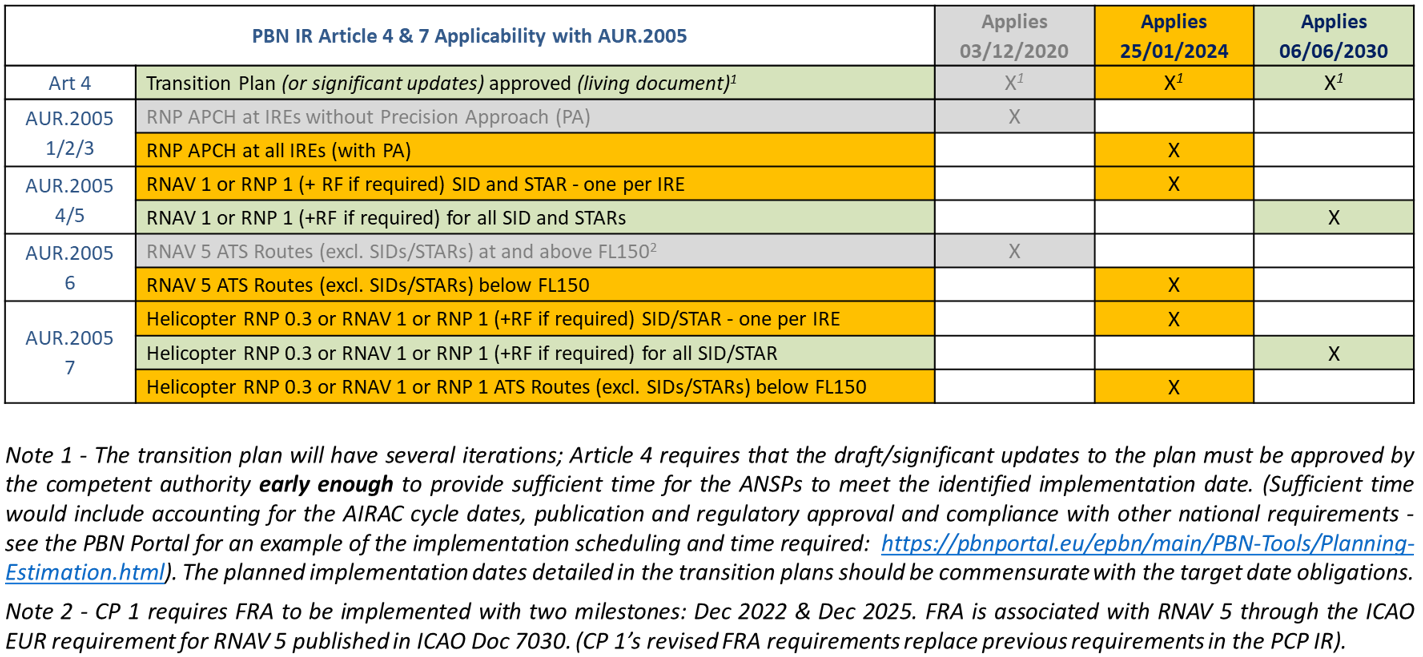Airspace changes are triggered by operational requirements. Within Europe, the implementing regulations issued by the European Commission have laid out a set of requirements at the regional level. EU 2018/1048 has stipulated a minimum requirement for en-route operations, SIDs and STARs and the approach. This is summarised in the table below:

Conventional procedures to manage aircraft of lower capability can be maintained up until June 2030. After this date, a single conventional procedure may be retained for contingency purposes only. There is no specific mandate on the airspace users, EU 2018/1048 is an airspace mandate and it is the responsibility of the Service Providers/airports to implement. For the airspace users as there is no specific mandate, EASA has made it very clear that aircraft must be suitably equipped and qualified for the operation in accordance with the Standardised European Rules of the Air (SERA) specifically the following:
SERA Rule 5015 flight rules (IFR) — Rules applicable to all IFR flights:
Aircraft equipment
Aircraft shall be equipped with suitable instruments and with navigation equipment appropriate to the route to be flown and in accordance with the applicable air operations legislation.
In addition, at national level there may be operational requirements which would drive an airspace change and these could include:
- the addition of a new runway in a terminal area (here the corresponding strategic objective may be to increase capacity at an airport)
- pressure to reduce aircraft noise over a residential area (this strategic objective is to reduce environmental impact over a particular area)
- the need to allow operations at an airport during low visibility conditions (i.e. improved access).
Operational requirements tend to be reasonably high level and are often decided at a high managerial level. These requirements drive the project objectives, scope and timelines.